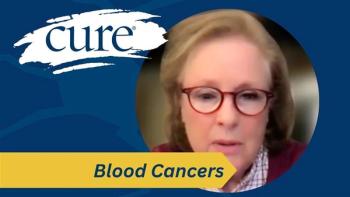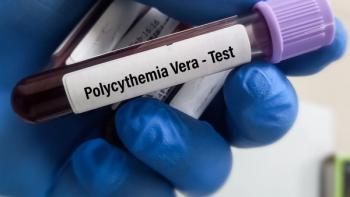
After a Horrible Experience With a Prescribed Drug Taper, I Decided to Wean Off Prednisone Myself
I’d become an eating machine with a loathsome attitude on prednisone, so I decided to conduct my own taper of the drug.
Four months after my allogeneic bone marrow transplant, I left the Stanford Cancer Institute to build a new cancer-fee life. Now I had to go into my local lab three times a week for blood work to monitor my progress.
In checking my computer for results of my blood test today, my liver function tests — indicators of liver injury — panic me. They are more than 20 times normal. Is this a meltdown? The Chernobyl of my liver? Three Mile Island? Strangely enough, I feel pretty good.
It’s after 7 p.m.I leave an urgent phone message for the on-call oncologist at Stanford. I pace and wonder if I should be in an ambulance or check into the ER. I phoned my friend, Gael, an RN, and asked her what to do. She demurs, “I hardly have a thumbnail of information about liver function; in fact, I barely have a hangnail of knowledge.”
I laugh out loud. “Well, if my liver gives out while we’re on the phone, I will have died laughing.”
My husband, Dan, wants to take me to the hospital but I convince him to wait until we hear from Stanford. Getting a call back, the oncologist assures me I’m not dying on the spot, but must go to Kaiser Permanente tomorrow for more testing.
After blood work the next day, I get the diagnosis: chronic graft-versus-host disease (GVHD), a disorder that commonly develops in donor-transplant patients after day 100. Patients can die from chronic GVHD, though I’d faced much worse and gone way too far to be knocked down now.
Along with the alarming liver counts, white, lacy ulcerations cover the inside of my mouth, another sure sign of GVHD. Treatment is prednisone.
Prednisone is used for a vast variety of illnesses and disorders, and — almost miraculously— cures or improves many dire and more mundane conditions. Reaction to prednisone depends on the dosage, with higher doses causing more severe side effects. Because my liver functions are so out-of-whack, I’m started on 80 mg per day. Having no previous experience with the drug, I have no expectation of side effects or what this dose means.
Within a couple of days, 80 mg of prednisone daily has turned me into an eating machine with a loathsome attitude. I cannot stop myself from biting Dan’s head off every time he walks into the room. I am a harpy — eating us out of house and home — andnasty and short tempered to boot. But the white spots inside my mouth are disappearing.
Hardly able to stand myself, I decide to read up on the side effects of prednisone, which include: weight gain (no kidding), hypertension, diabetes, insomnia, moon face, depression, anxiety, sexual dysfunction, female facial hair growth, balding—Wait a minute, that’s not fair—osteoporosis or loss of calcium in bones, fatigue, body aches, and sagging skin, among other dreadful effects. Great. Just great.
I become very annoyed with my doctor, which is not an unexpected response since I am furious with the entire world. I struggle through a week of hell. The next liver function test is still elevated, but has dropped steeply. I’ve been through enough. I’ll taper the prednisone myself. Still very bad tempered, I’m not going to ask anyone and be told no.
A month later, I’ve tapered myself down to 10 mg per day. I am reconciled with the world, and Dan, and have gotten my face out of the refrigerator.
After another week, I take myself off prednisone entirely. My liver function tests are near normal and the white spots in my mouth don’t return. However, not one of my doctors said, “Gee, your liver functions are looking good, why don’t we taper you off the prednisone?” I doubt that my docs have ever been on daily doses of 80 mg of prednisone for weeks at a time. Otherwise, maybe, they would know what I’ve been suffering. Alright, they deal with life and death issues daily, so maybe my bad attitude or gluttony isn’t the most pressing item on their agendas.
I’ve experienced both sides of the drug-dose calamity: the catastrophically
A simple, direct outreach call does not strike me as rocket science.
For more news on cancer updates, research and education, don’t forget to





